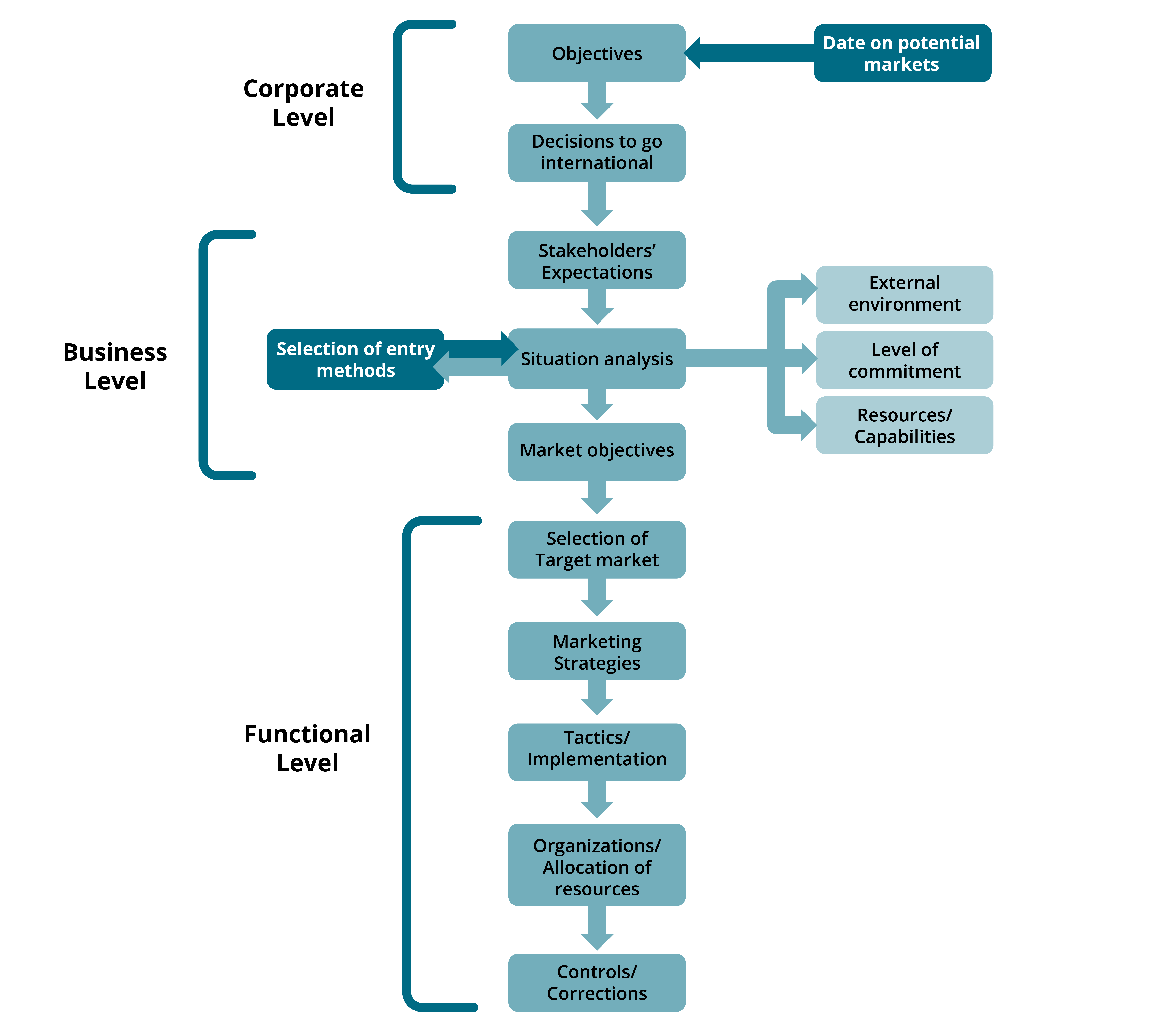11.2 Writing the Global Marketing Plan
It should be apparent by now that companies and organizations planning to compete effectively in world markets need a clear and well-focused international marketing plan that is based on a thorough understanding of the markets in which the company is introducing its products. The challenge, then, of international marketing is to ensure that any international strategy has the discipline of thorough research, and an understanding and accurate evaluation of what is required to achieve the competitive advantage. As such, the decision sequence in international marketing is much larger than that of domestic markets.

The Corporate Level
We begin at the corporate level, where firms decide whether to become involved in international markets and determine the resources they are willing to commit. Thus, this stage is primarily concerned with the analysis of international markets. Decisions here will be dependent on matching the results of that analysis with the company’s objectives. These objectives, in turn, will be determined by the many motivating factors we have discussed in the earlier sections. The level of resources that the company is willing to commit should be determined by the strategy that is needed to achieve the objectives that have been set.
The Business Level
Business-level considerations begin with the assessment of the stakeholders involved in the business. It is important to clearly identify the different stakeholder groups, understand their expectations, and evaluate their power, because the stakeholders provide the broad guidelines within which the firm operates. In the case of international marketing, it is particularly important to address the concerns of the stakeholders in the host company.
The situation analysis concerns a thorough examination of the factors that influence the businesses’ ability to successfully market a product or service. The results lead to a realistic set of objectives. Conducting a situation analysis in an international setting is a bit more extensive. It not only includes the normal assessment of external environmental factors and resources /capabilities, it also includes a determination of the level of commitment exhibited by the business, as well as possible methods of entry. These last two factors are interrelated in that a company’s level of commitment to international markets will directly influence whether they employ exporting, a joint venture, or some other method of entry.
In turn, level of commitment and method of entry are influenced by the evaluation of environmental factors as well as resources and capabilities. The latter audits not only the weaknesses of the company, but also the strengths of the company, which are often taken for granted. This is particularly important in international markets; for example, customer brand loyalty may be much stronger in certain markets than others, and products may be at the end of their life in the domestic market but may be ideal for less sophisticated markets. It is important, too, to evaluate the capacity of the firm to be flexible, adaptable, and proactive, as these are the attributes necessary, for success in a highly competitive and rapidly changing world.
Undoubtedly, environmental factors have received the most attention from marketers considering international markets.
The Functional Level
Having set the objectives for the company, both at the corporate level and the business level, the company can now develop a detailed program of functional activities to achieve the objectives. Following the integrated approach employed throughout this text, each of the functional elements (e.g. finance, human resources, research) must be considered jointly. The best international marketing strategy is doomed to failure if human resources can not find and train the appropriate employees, or research cannot modify the product so that it is acceptable to consumers in another country. Ultimately, this coordination between business functions is contingent on the market entry strategy employed as well as the degree of standardization or customization deemed.
Having integrated at the function level, we next consider integration of the marketing mix elements.
Core Principles of International Marketing – Chapter 13.2 by Babu John Mariadoss is licensed under a Creative Commons Attribution-NonCommercial-ShareAlike 4.0 International License, except where otherwise noted.

